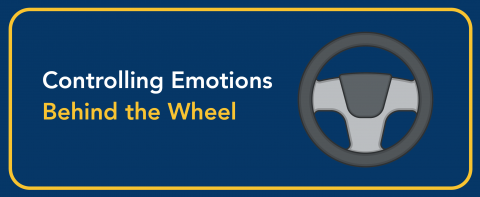
Stressful driving situations can cause strong emotions to surface. The problem comes when we let our emotions get the best of us and affect our ability to stay focused while driving. In fact, the National Highway Traffic Safety Administration estimates that one-third of all fatal car crashes could be attributed to road rage. To lower this number, use the following tips to help you manage your emotions behind the wheel.
Anticipate
When you get behind the wheel, anticipate emotion-producing situations and adjust your expectations. For instance, if you know there will be delays during rush hour, allow yourself more time to get home. In addition, scan the area ahead of you for early warnings of any possible problems. This will give you time to gradually slow down if necessary. If you were to apply the brakes abruptly, this may be interpreted as an aggressive maneuver.
Tailgating
Don’t tailgate anyone else and don’t let a tailgater cause you to get upset. In a passenger car, you should maintain a safe following distance between you and the vehicle in front—regardless of your speed. The worst thing you can do when you have a tailgater is to slam on the brakes. You can’t control the tailgater’s actions, all you can do is reduce your speed and increase your following distance to try to reduce the chances of abrupt braking. If you are not already in the right lane, you may also change lanes to the right and allow for the tailgater to pass you if legal and safe to do so.
Gestures
Don’t use hand gestures to signal to the other driver, as they could be misunderstood and could lead to an altercation. In addition, make sure to ignore gestures from the aggressive driver and remain calm. Another natural response that can get you in trouble is eye contact. This silent communication between individuals can personalize a situation and easily be misunderstood. In an aggressive situation, try to avoid any eye contact with other drivers. It can help to diffuse the situation instead of escalating the behavior of the aggressive driver.
Overall, if you encounter an aggressive driver, do not challenge them. Regardless of how an incident first starts, you should try to diffuse it, and never continue it. Escalating the situation could lead to disastrous results.
